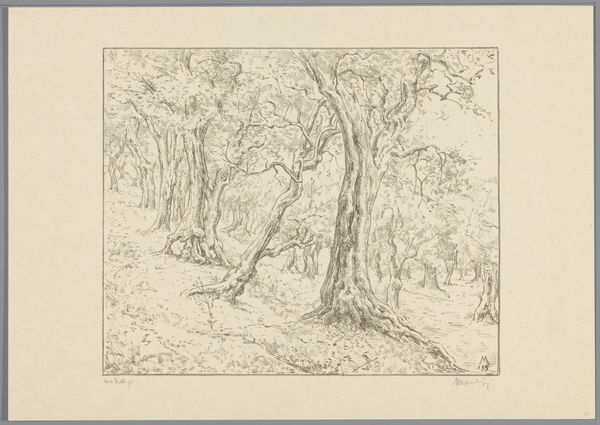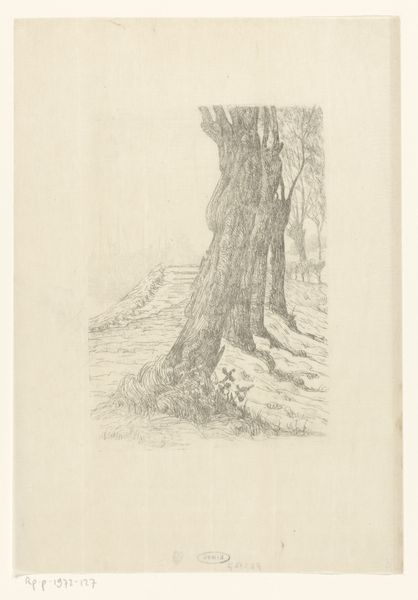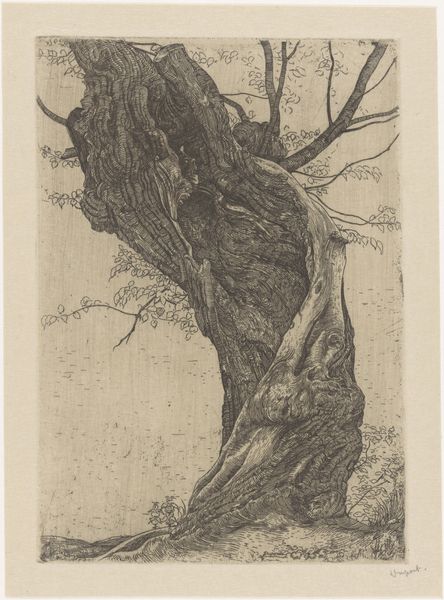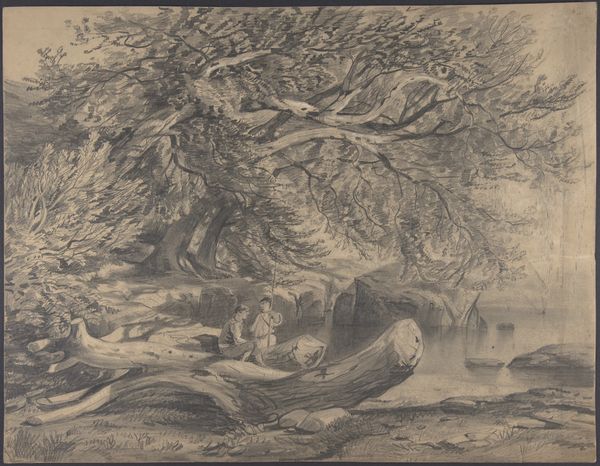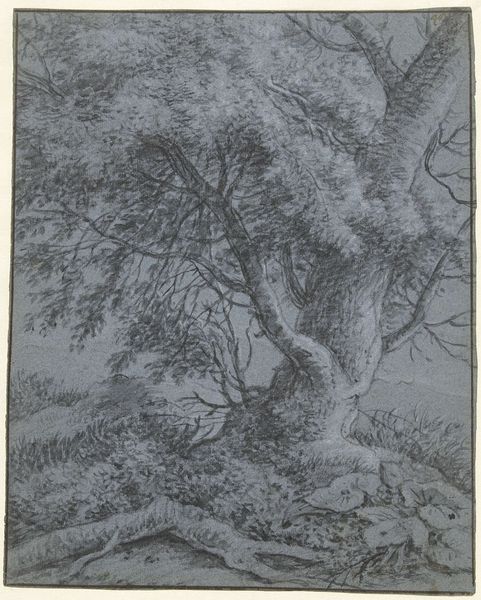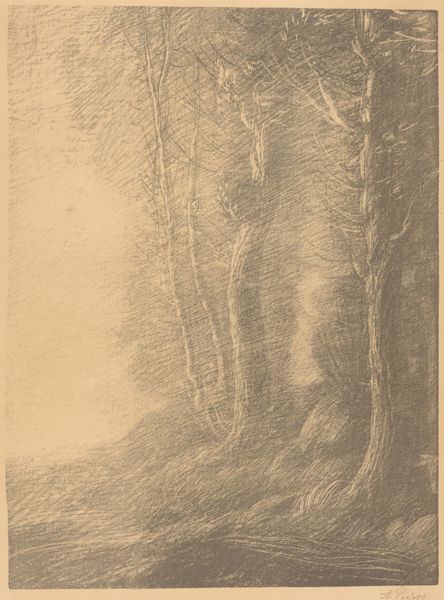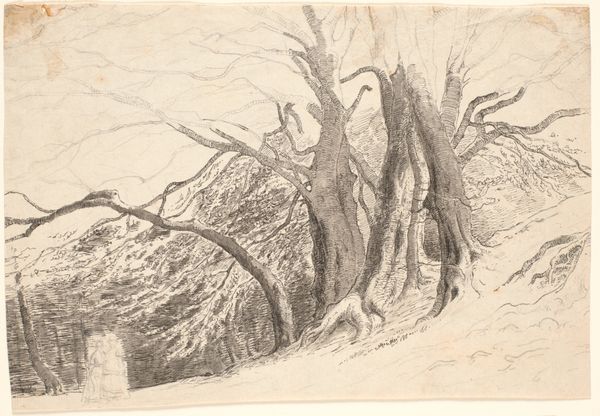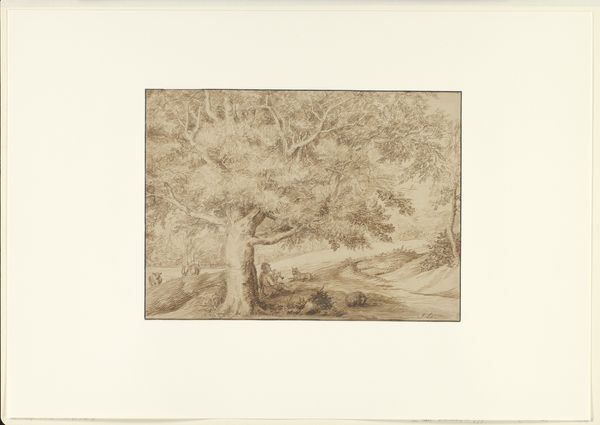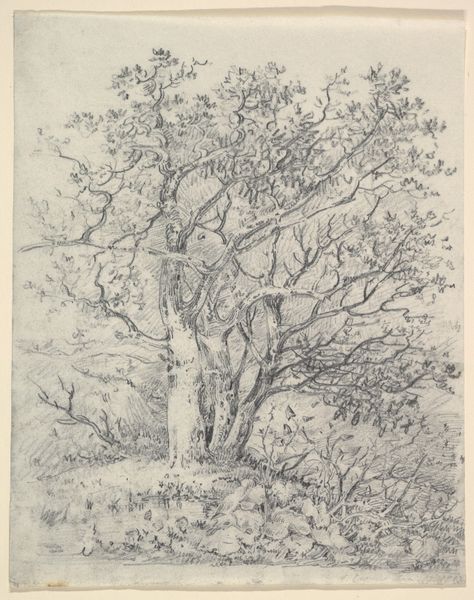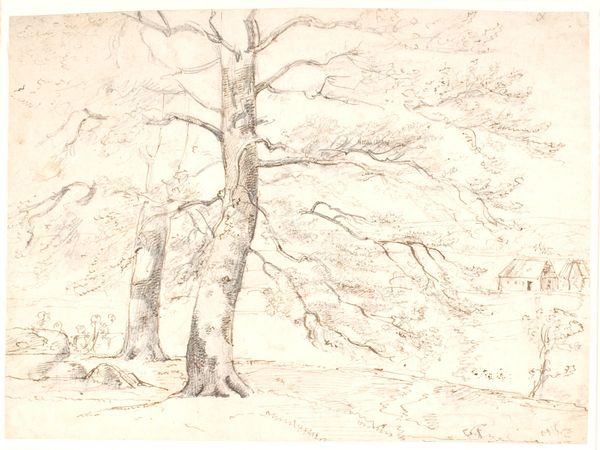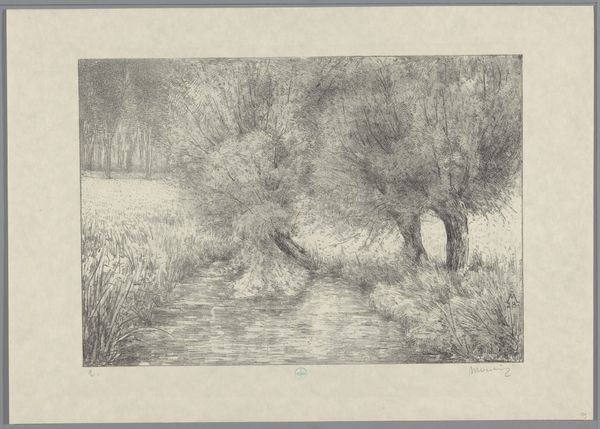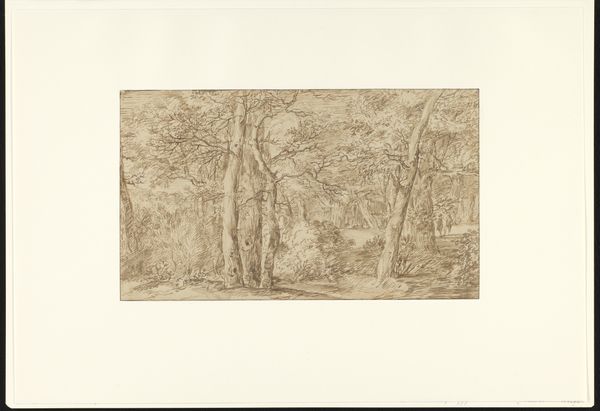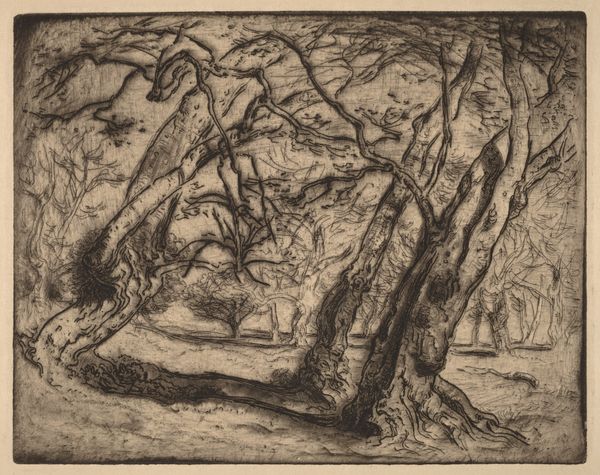
drawing, print, etching
#
drawing
# print
#
etching
#
landscape
#
realism
Dimensions: height 300 mm, width 423 mm
Copyright: Rijks Museum: Open Domain
Editor: So, this etching is titled "Beukenstam," which translates to "Beech Trunk," made by Simon Moulijn in 1923. I find the close-up perspective really striking; it's almost confrontational, focusing solely on the tree’s imposing size. What are your initial thoughts? Curator: The realism in "Beukenstam" needs to be considered in context. Early 20th-century art often grappled with representing nature honestly, rejecting idealizations. What choices are made to isolate the tree, stripping the imagery to barest expression? It omits a broader environmental view, don't you think? Editor: Yes! It does focus intensely on this lone beech. Maybe it suggests a commentary on individuality against a fading natural landscape? The sharp etching lines give such texture, I wonder how this impacted art reception back then? Curator: Exactly! Realism, even in landscapes, can be seen as a social or political statement. In an increasingly industrialised world, a solitary tree could represent a longing for an unspoiled environment. The print medium itself also plays a role - was it created to democratise the image of nature? Editor: That’s a cool point about printmaking and democratisation of images; I never considered that. The detail almost romanticises this single tree but I also notice some harsher, broken features on the terrain and tree limbs. What is that contrast expressing? Curator: That contrast makes me think about our evolving view of nature itself: the image shifts toward less gentle perceptions and reflects changing cultural awareness to our ecological relationship. The broken textures imply hardship in an unforgiving environment and how humanity fits (or doesn't) into this. How does considering these socio-political factors reshape your understanding? Editor: It transforms it! I thought it was just a pretty landscape, but now it feels heavy with historical and social relevance. Curator: It's a fascinating print because it reveals layers about art's public role and our relationship with the natural world. The way images were consumed, understood and their social meaning... Food for thought!
Comments
No comments
Be the first to comment and join the conversation on the ultimate creative platform.
